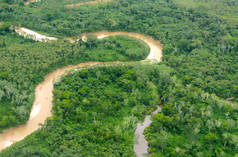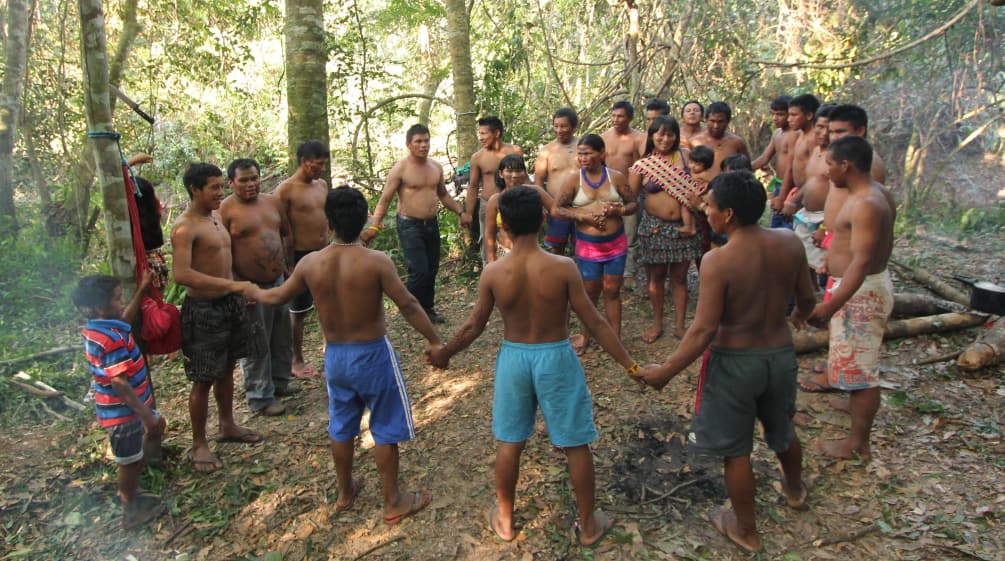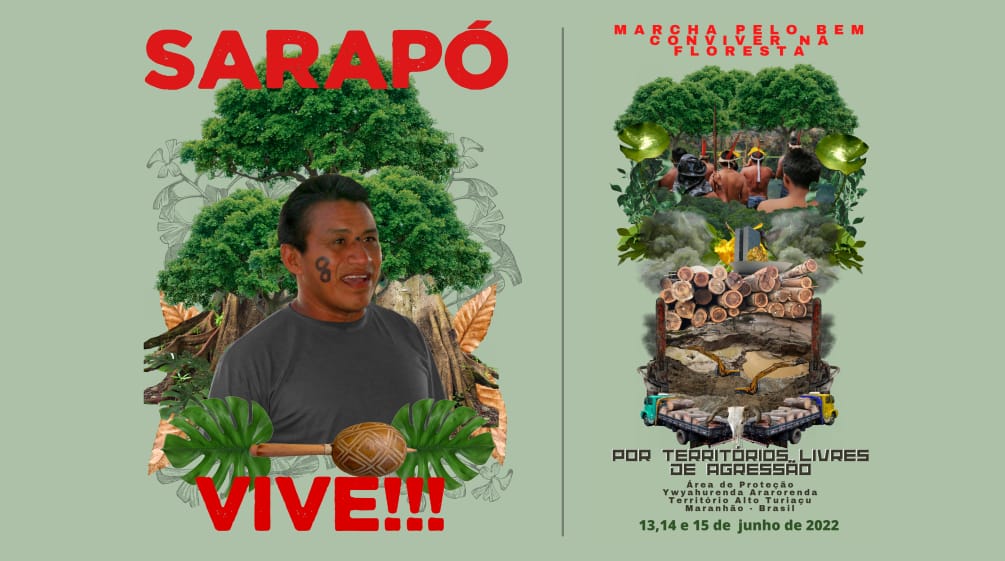The conservation community mourns Sarapo Ka'apor
May 26, 2022
Sarapo Ka'apor, the leader of the Ka'apor indigenous people, has died in Brazil. The circumstances of his death are unclear. The Ka'apor fear their leader has been poisoned and are demanding that the authorities investigate the cause of his death.
"Sarapo Ka'apor could not withstand the pressure and threats of the aggressors in the region," TUXA TA PAME, the Ka'apor indigenous council, wrote us.
Sarapo Ka'apor died on May 14, 2022, at the age of 45. He lived in a recognized indigenous territory that companies had in their sights for gold mining. As the leading forest conservation activist in the region and organizer of the movement to resist mining, Sarapo made numerous powerful enemies.
The Ka'apor reported the unclear circumstances of his death to the Brazilian authorities and, together with the Organization for Human Rights in the State of Maranhão (Sociedade Maranhense de Direitos Humanos, SMDH), the indigenous people are calling on the Ministry of Public Security to exhume his body and have the exact cause of death determined by forensic experts.
"We fear that influential people paid hitmen to poison Sarapo," the Ka'apor wrote. "We are surrounded and being pressured by gold prospectors and mining companies."
As head of the Ka'apor self-defense guard, Sarapo led a dangerous life. He and three other Ka'apor leaders were in a government protection program for endangered people in Brazil. Most recently, in January 2022, he was confronted by loggers who threatened to kill him.
"We want to get to the bottom of everything that happens here, and we want justice," the Ka'apor wrote. From June 13 to 15, 2022, they will conduct a pilgrimage for the forest and to express their resistance to mining.
Rainforest Rescue supports the demands of Ka'apor. We call on the Brazilian authorities to act without delay. The circumstances of the death of Sarapo Ka'apor must be brought to light, as well as the many other crimes – assaults and murders – suffered by the indigenous people. The perpetrators and their backers must be identified and convicted, and the people and their territory must be effectively protected from further threats and encroachment.
Local people face extreme violence
Since 2015, two Ka'apor villages have been raided by loggers. A total of 15 indigenous people have been murdered in the territory in recent years. None of the crimes have been solved by the Brazilian authorities and to date not a single perpetrator has been convicted.
All of this is happening before the eyes of state officials and the Brazilian authorities who stand idly by, ignoring the complaints and demands of the indigenous people. Many civil servants and politicians are corrupt and involved in the activities.
Brazilian authorities have awarded several concessions to companies to mine gold on thousands of hectares of land. The mining concessions are located directly on the border, and in some cases even within the indigenous territory.
The Ka'apor are defending their ancestral territory
The Ka'apor, who number around 1,800, are one of the more than 300 indigenous peoples of Brazil. They live in a recognized and demarcated territory, Alto Turiaçu, in the Brazilian state of Maranhão. The 531,000-hectare old-growth forest – an area more than three times the size of London – stands out like a lush green island amid a sea of destruction.
With their way of life, the Ka'apor have defended their territory against illegal invaders and plunderers and protected the land against deforestation. Timber and mining companies, cattle ranchers and land grabbers have almost completely cleared the rainforest right up to the edge of their territory and beyond. Yet the existing protected area is only the last remnant of a much larger territory that had already been stolen from the Ka'apor in previous decades.
There, in the northeast of Brazil, the Amazon rainforest gradually transitions into the tropical savannas of the Cerrado. The unique conditions provide a habitat for an enormous variety of animals and plants. Some species such as the critically endangered Ka'apor capuchin monkey (Cebus kaapori) and the endangered black bearded saki (Chiropotes satanas) have their last habitats in Alto Turiaçu.














